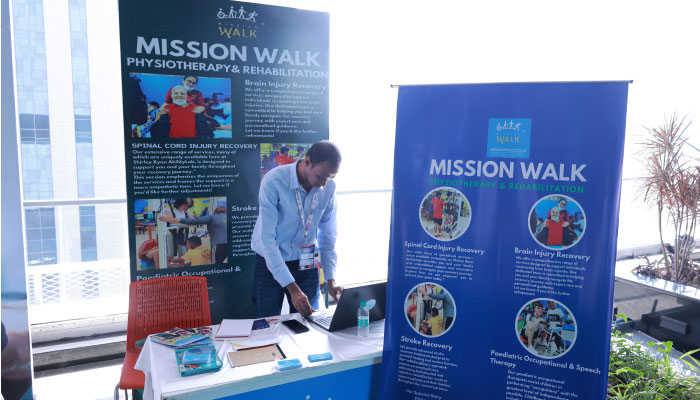Angelina is very passionate about swimming. She wants to participate in swimming championships at the national level. In order to maintain her weight, she eats less and exercises more. Over a period of time, she seems weak, has not had her menstrual periods for 6 months, and complains of pain in her legs. She is suffering from what is called the Female Athlete Triad, a common condition in female sportswomen.
Understanding Female Athlete Triad
The word ‘Female Athlete Triad’ is commonly used by coaches and athletes in the context of females in sports and athletic activities. As the name suggests, it consists of three conditions: inadequate nutrition, absence of menstrual periods for longer than 6 months, and weak bones. It is regarded as a disorder in which the person stops eating properly; since the body is not getting proper nutrition, the menstrual periods become irregular and the bones become weak, resulting in a condition known as osteoporosis. Due to the stress experienced in sports activities, estrogen levels decrease, which also contributes to irregular periods and weak bone density, resulting in minor cracks in the bones in female sportspersons.
The females who have the female athlete triad suffer from inadequate nutrition, which results in problems like fatigue, an irregular heartbeat, and a loss of concentration in their daily work. When the body does not receive all the nutrients it needs, not only does it become weak, but the estrogen levels also decrease, causing irregular periods known as amenorrhea. Normal estrogen levels are needed for the absorption of calcium into the body for strong bones. Low estrogen levels result in a decrease in the absorption of calcium into the body, leading to a condition known as osteoporosis, which can result in fractures of the bones. These fractures are known as stress fractures, which are thin, small cracks in the bone due to overexertion and weakness of the bones. A gymnast with weak bones can get a stress fracture in her spine, while a runner can get it on the leg or foot. If you continue exerting stress on the fractured area, the bone will break. It is during the teenage years that the body forms strong bones that are needed for the rest of your life, as after 20 years of age, very little bone mass is added. This means that this disorder can leave you with weak bones for the rest of your life.
Risk Factors
The female athlete triad is seen in sports women who exercise more than necessary for the sport, maintain a certain weight required for the sport, have no time for family and friends, or are being pushed by parents and coaches to win at all costs. Sports activities that emphasize a thin physical appearance for better performance, like gymnastics, figure skating, ballet, and diving, put the athletes at high risk of getting female athlete triad disorder. In these situations, the female athlete is under immense physical and mental stress to achieve her goals, which adversely affects her health and leads to the disorder.
Symptoms
A woman suffering from the female athlete triad may experience fatigue, irregular periods, absence of periods, restricted dieting, and fractures due to stress, excessive exercise, induced vomiting, binge eating, and muscle injuries. Other symptoms include worrying continuously about food and weight loss, using laxatives often, going to the bathroom during and after meals, brittle nails and hair, frequent vomiting, which causes erosion of enamel leading to dental caries, chest pain, a low heart rate, low blood pressure, and sensitivity to cold.
Diagnosis
The doctor conducts a physical examination and lab tests in which he looks out for symptoms like anemia, fatigue, depression, and electrolyte imbalance (an imbalance of salts like sodium, potassium, bicarbonate, and chloride) in the body that are caused by dieting. The doctor conducts a DEXA scan (dual-energy X-ray absorptiometry) if the patient has had amenorrhea (irregular periods) for more than 6 months to check for bone density with the help of X-rays. The denser the bone is, the fewer X-rays can pass through it.
Treatment
The doctor will counsel you regarding your exercise and diet. You will be advised to meet a nutritionist who will develop a healthy eating plan for you that will comprise all the essential nutrients your body needs. Even after healthy eating and controlled exercise, if your menses are not regular, the doctor will prescribe birth control pills that contain female hormones like progesterone and estrogen to avoid loss of bone density.
Prevention
To prevent the Female Athlete Triad, awareness regarding the disorder is important among coaches, athletes, and their families. It is important for the coaches to understand that healthy eating is essential for good performance. More emphasis has to be given to a healthy body than body weight. The athletes need all the support they can get from their coaches, and it is the responsibility of the coach to seek the help of physicians, counselors, and nutritionists for their athletes’ well-being. The athletes, on the other hand, have to monitor their menstrual cycle and report any irregularities they may find to the doctor immediately. It is important for athletes to make healthy eating a daily habit.
Strong bones for better performance
The percentage of disordered eating habits in female college students is 15% to 62%, while amenorrhea in female athletes is 3.4% to 66% when compared to normal females that have only 2% to 5% amenorrhea. Female athletes should remember to eat nutritious food and take extra calcium supplements to keep their bones strong. The daily dietary calcium recommended for women between the ages of 11 and 24 is 1200 mg to 1500 mg per day. Remember that healthy eating leads to strong bones, and strong bones aid in better performance.



